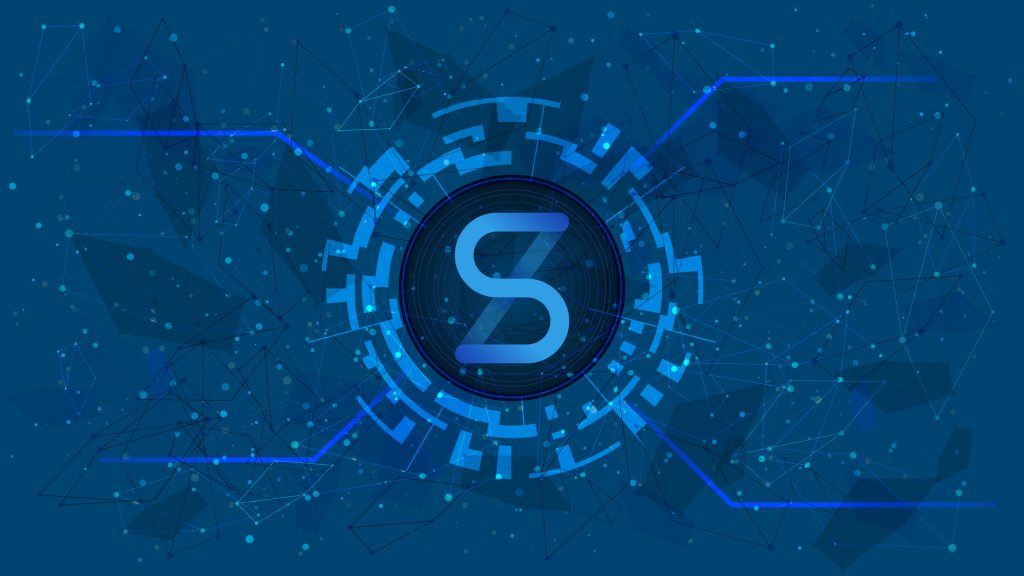Over the past year, countless traditional financial products have been replicated on the Ethereum blockchain. The area is accordingly referred to as decentralized finance (DeFi). An introduction to the Synthetix protocol, the largest project in the field of decentralized derivatives.
The sector of decentralized finance (DeFi) has evolved so fast over the past year that new ways of trading and earning from digital assets have emerged at unprecedented rates. What was once just limited to collateral-backed lending and borrowing platforms is now a virtual smorgasbord of different protocols offering derivatives, flash loans, dynamic stablecoins, and synthetic assets.
The Synthetix protocol launched in order to provide access to these synthetic assets in tokenized form by using a complex system of algorithms and derivatives. Traders holding so-called "synths" on the protocol do not have the real asset in their possession, however, they can still gain exposure to its price movements. Synthetix is one of the largest but also one of the most complex DeFi projects to understand.
Brief history of Synthetix
The platform started out as a stablecoin project called Havven with its native cryptocurrency, the Havven Token (HAV). The platform had a token sale (ICO) in February 2018. Its initial aim, according to the white paper, was to become a decentralized payments network that uses a dual token system to issue stablecoins called nUSD, with the HAV tokens as collateral.
Early investors and HAV holders received a percentage of the fees generated from all nUSD transactions as a reward. This also helped to maintain its dollar peg. The team quickly found out that stablecoins could do a lot more. As a result, they announced the major rebranding to Synthetix in late November 2018, with HAV tokens becoming SNX. The whole project was founded by Australian entrepreneur Kain Warwick.
How does the protocol work?
Synthetix in its current form enables the creation of on-chain synthetic assets which use oracles to track the price movement of the same assets in the real world. The Ethereum-based DeFi platform allows investors to get price exposure for pretty much any asset from stocks to commodities, fiat currencies, and of course crypto assets. The protocol also has its own stablecoin, sUSD. It offers staking, yield farming, and a variety of derivatives trading options.
Synthetic assets are minted on the protocol using the Synthetix Network Token (SNX) as collateral. This is locked into a smart contract. In early 2020, the protocol enabled the use of Ether (ETH) as collateral in addition to SNX. The collateral ratio is 750% so if users want to mint 100 British pounds into a sGBP Synth they would need to stake 750 British pounds worth of SNX. If the price of SNX increases, an equivalent portion of a staker’s SNX is automatically unlocked as collateral. The official documentation explains why the ratio is so high:
“This mechanism allows Synthetix to support instantaneous, near-frictionless conversion between different flavors of Synths without the liquidity and slippage issues experienced by other decentralized exchanges. The resulting network of tokens supports an extensive set of use cases including trading, loans, payments, remittance, eCommerce, and many more.” - Synthetix documentation
SNX stakers incur debts when they mint Synths. In order to exit the system and unlock their SNX, they must pay back this debt by burning Synths. Each Synth is an ERC-20 token that tracks the price of an external asset; for example, sUSD tokens track the price of the US dollar, and gold-based Synths will track the real-world price of the commodity via a Chainlink oracle.
Different possibilities
The platform also has iSynths which inversely track the price of assets via price feeds and oracles. These allow traders to effectively take short positions. They are also available for cryptocurrency and index-based Synths. Inverse Synths have three important points: an entry point, an upper limit, and a lower limit, the entry point being the price at which it enters into the system.
If an iBTC Synth entered at a price of $50'000 that would be its entry point so if the price of the sBTC Synth (which tracks Bitcoin’s actual price) drops to $49'000 then iBTC would be at $51'000 and vice versa. The upper and lower limits are where the Synth is frozen for leverage purposes.
Index Synths track various indexes such as the Nikkei or Nasdaq or even crypto and DeFi related indexes that exist. Likewise, forex-related Synths track the price of forex fiat currencies via price feeds.
Synthetix has a bit of a steep learning curve. Its abstract nature means that it is not for everyone. Those wanting access to global stock market movements but can’t due to geographical restrictions would benefit from using the platform. Additionally, traders looking to short crypto non-accredited assets for futures platforms can also benefit. Beginners that are looking for simple DeFi yield farming should probably seek user-friendlier platforms.
Synthetix roadmap
The 2021 roadmap was laid out in a blog post by founder Kain Warwick in January 2021. He likened it to the title of a sci-fi movie depicting a “future where everyone in the world is connected to one another by handheld devices that allow them to hold, trade and transfer every imaginable asset.”
The migration to a full Layer 2 exchange and the depreciation of assets on Ethereum mainnet is the team’s priority for this year. The move becomes more of a necessity every time Ethereum transaction fees break their previous high.
Synthetix v3 was mentioned, representing a complete re-architecture of the smart contracts for the first time since late 2018. However, no timeframe was given. It will provide a new staking mechanism, tokenized debt, price thresholds, and order matching. There will be a number of governance improvements, asset expansion into equities, leveraged futures, binary options, and acquisitions on the cards.
Synthetix will get a lot deeper than it is already in terms of complexity, which is music to the ears of advanced traders looking for greater flexibility and options in the burgeoning fledgling financial sector that is DeFi.




